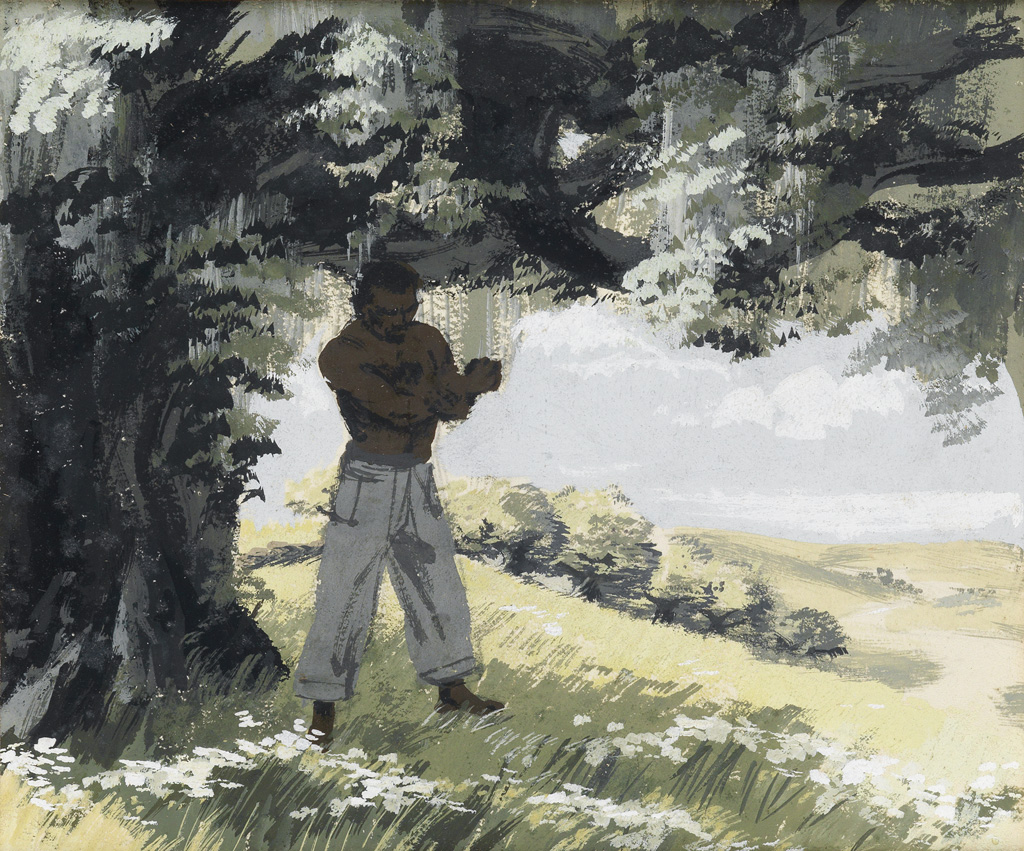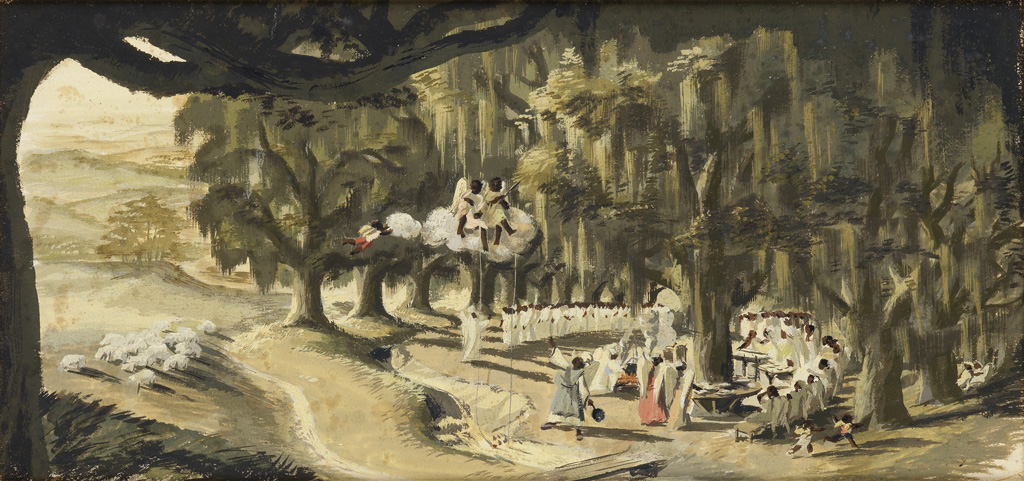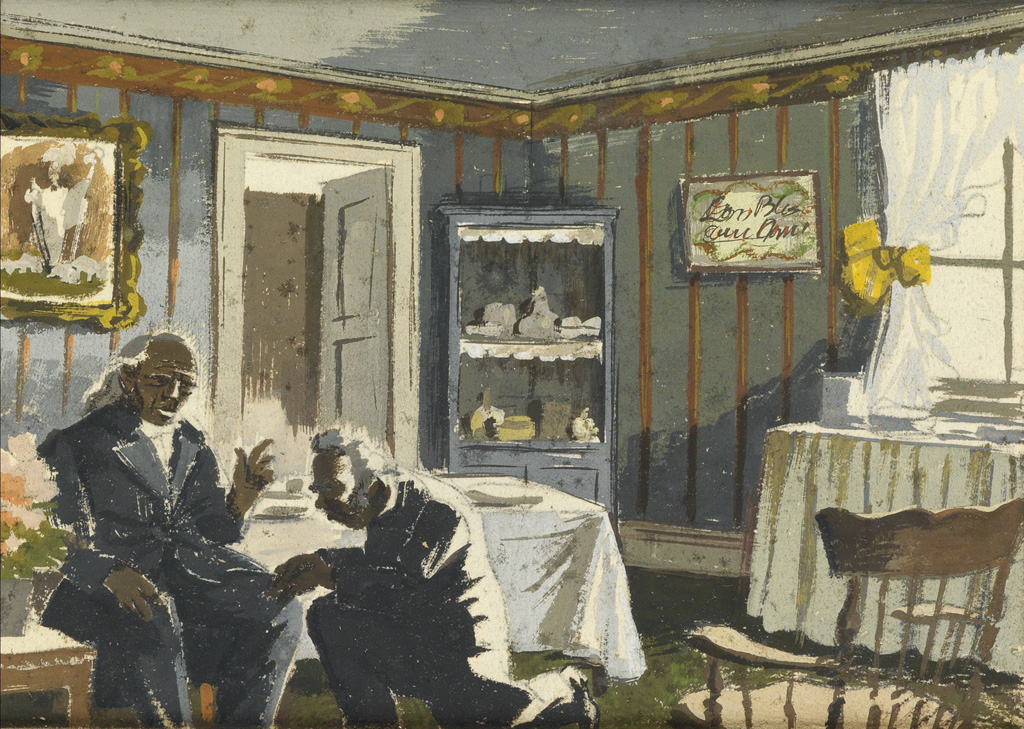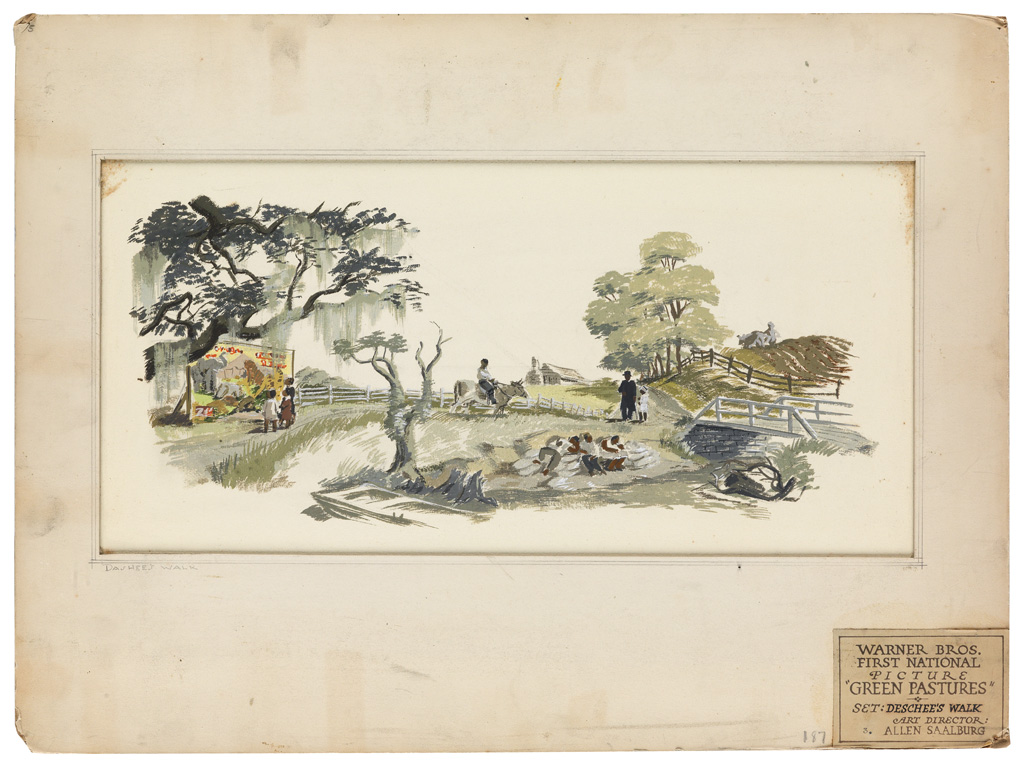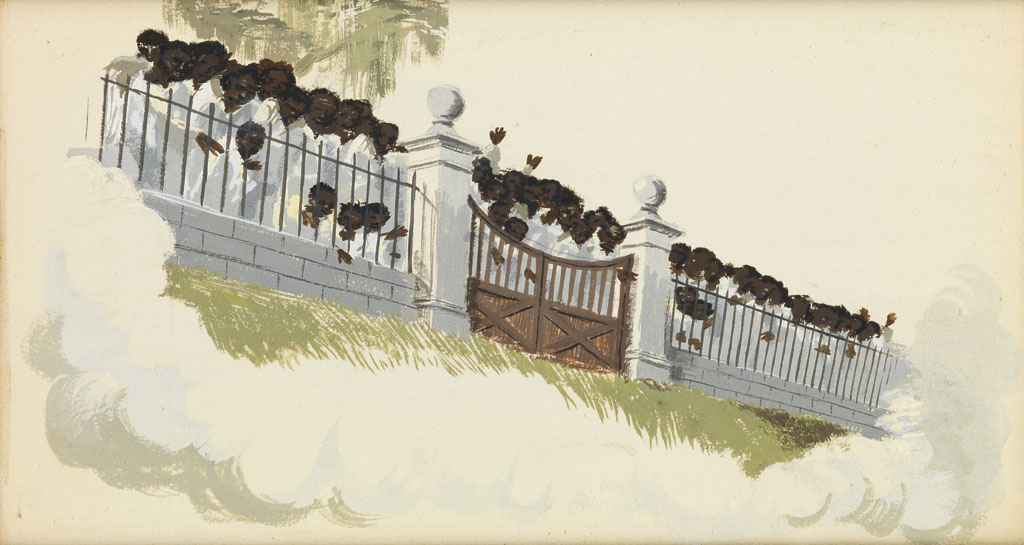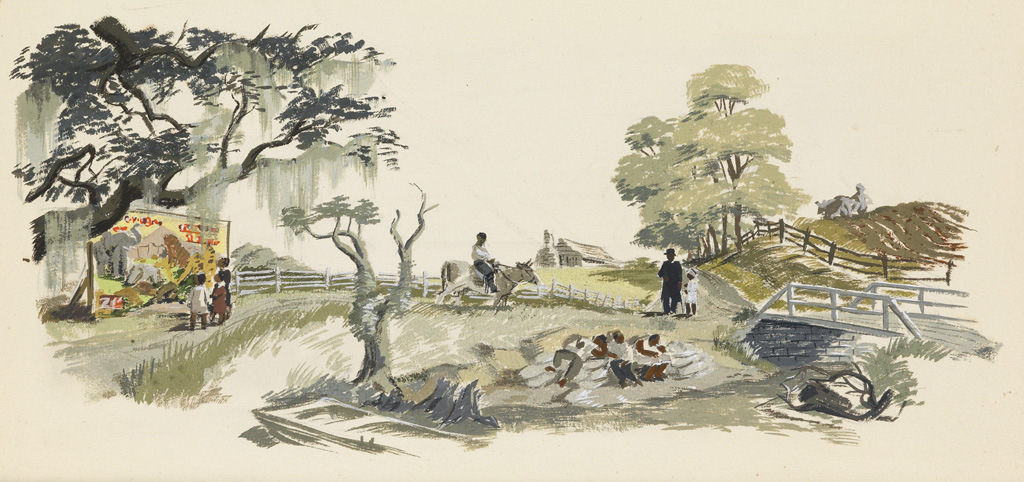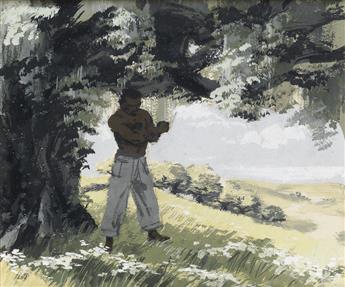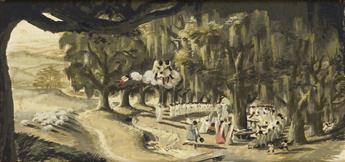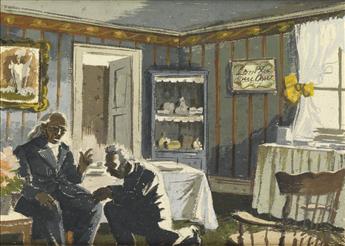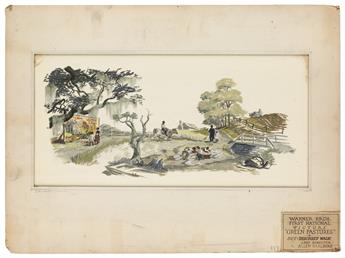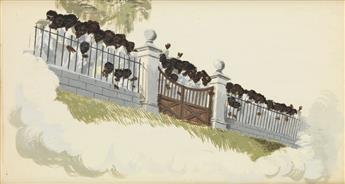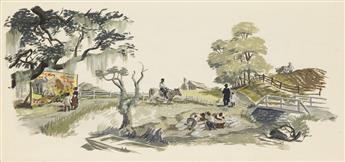Sale 2423 - Lot 175
Price Realized: $ 5,800
Price Realized: $ 7,250
?Final Price Realized includes Buyer’s Premium added to Hammer Price
Estimate: $ 6,000 - $ 9,000
ALLEN SAALBURG.
Archive of set designs for "The Green Pastures." Together, 22 designs for the 1936 Warner Brother's feature film, starring an all black cast that brings to life Bible stories through lens of deeply rooted Southern culture. Gouache on board. Sizes vary with the largest measuring 381x559 mm; 15x22 inches. One signed, Warner Brother's label on matte of one, many captioned on matte or on verso. Occasional dustsoiling and foxing. Most mounted to original mattes.
Archive of set designs for "The Green Pastures." Together, 22 designs for the 1936 Warner Brother's feature film, starring an all black cast that brings to life Bible stories through lens of deeply rooted Southern culture. Gouache on board. Sizes vary with the largest measuring 381x559 mm; 15x22 inches. One signed, Warner Brother's label on matte of one, many captioned on matte or on verso. Occasional dustsoiling and foxing. Most mounted to original mattes.
Additional Details
Based on the Pulitzer Prize-winning play by director Marc Connelly, "The Green Pastures," was an attempt to introduce the importance of oral traditions and biblical narratives of Southern African-American culture to the rest of America. The opening passage states, "Negroes in the Deep South visualize God and Heaven in terms of people and things they know in their everyday life." The film begins with the Reverend of a children's Sunday school class whose preferred method of pedagogy is to situate Bible stories within the context of relatable characters from their community. From there, the film launches into whimsical interpretations of important Bible stories, beginning with a jolly fish fry in Heaven, the creation of Adam, a thunderous Exodus scene, among others-- often accompanied by a choir of angels singing traditional Southern spirituals.
While the film was heavily criticized for its simplistic and stereotypical portrayal of African Americans, The Green Pastures offered an important and rare insight into the real religious practices of the South. Despite being produced at the height of The Great Depression, the film was a significant opportunity for the stars of the all-black cast including Rex Ingram, Oscar Pollock, Edna Mae Harris, and George H. Reed, as well as the hundreds of extras the film employed.
To reduce production costs, the film was shot entirely on a 300x175 foot soundstage in Burbank, California. In order to accomplish the illusion of rolling hills and expansive canopies of Spanish moss, Art Director Allen Saalburg was given the task of painstakingly designing the logistics of each scene. The set designs in this archive reveal the mind of a problem solver and artistic genius. "Even the Exodus scenes which utilized hundreds of principals and extras were managed indoors. . . . Saalburg used what is technically known as 'forced perspective' to achieve the necessary effects." ("Forced Perspective Used in Filming "Pastures" The New York Times 3 June 1936.)
His careful calculations and strategically placed props expanded the camera's eye by a factor of six. Critics at the time universally praised the grandeur of the film, heralding the visual effects as an unprecedented achievement. With the film being shot and released in black and white, Saalburg's colorful renderings lend further insight into the creation of Hollywood magic with the help of an artist's touch.
Provenance: The archive comes directly from the artist's estate and appears to be complete, except for the eight designs purchased by Gertrude Vanderbilt Whitney for the Whitney Museum of American Art.
While the film was heavily criticized for its simplistic and stereotypical portrayal of African Americans, The Green Pastures offered an important and rare insight into the real religious practices of the South. Despite being produced at the height of The Great Depression, the film was a significant opportunity for the stars of the all-black cast including Rex Ingram, Oscar Pollock, Edna Mae Harris, and George H. Reed, as well as the hundreds of extras the film employed.
To reduce production costs, the film was shot entirely on a 300x175 foot soundstage in Burbank, California. In order to accomplish the illusion of rolling hills and expansive canopies of Spanish moss, Art Director Allen Saalburg was given the task of painstakingly designing the logistics of each scene. The set designs in this archive reveal the mind of a problem solver and artistic genius. "Even the Exodus scenes which utilized hundreds of principals and extras were managed indoors. . . . Saalburg used what is technically known as 'forced perspective' to achieve the necessary effects." ("Forced Perspective Used in Filming "Pastures" The New York Times 3 June 1936.)
His careful calculations and strategically placed props expanded the camera's eye by a factor of six. Critics at the time universally praised the grandeur of the film, heralding the visual effects as an unprecedented achievement. With the film being shot and released in black and white, Saalburg's colorful renderings lend further insight into the creation of Hollywood magic with the help of an artist's touch.
Provenance: The archive comes directly from the artist's estate and appears to be complete, except for the eight designs purchased by Gertrude Vanderbilt Whitney for the Whitney Museum of American Art.
Exhibition Hours
Exhibition Hours
Aliquam vulputate ornare congue. Vestibulum maximus, libero in placerat faucibus, risus nisl molestie massa, ut maximus metus lectus vel lorem.



